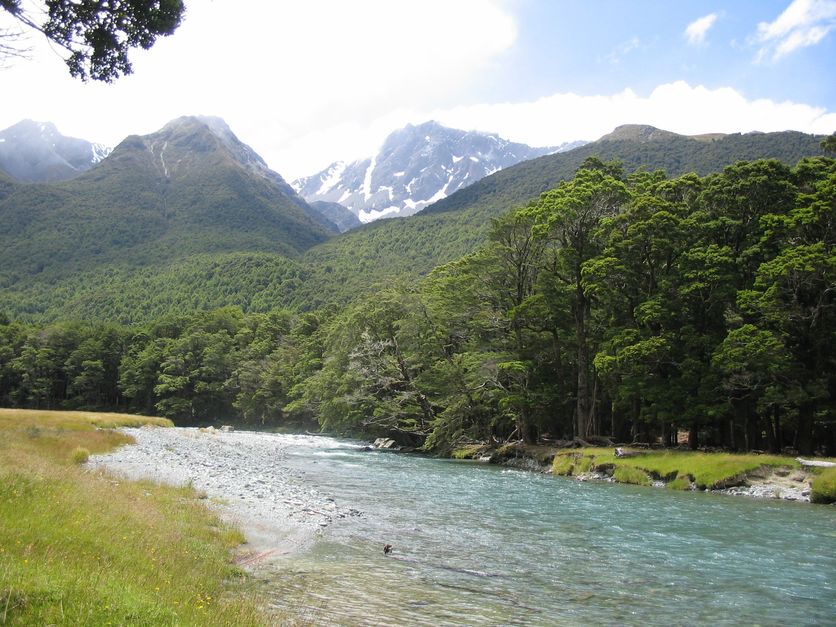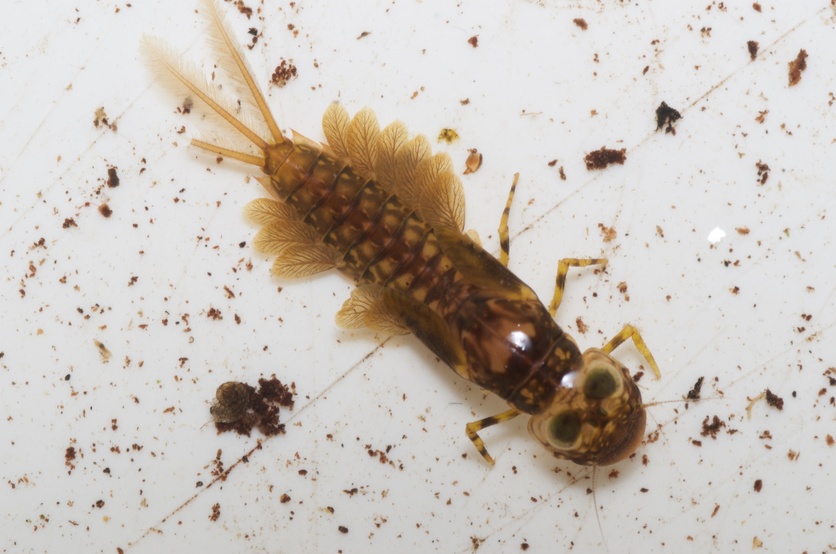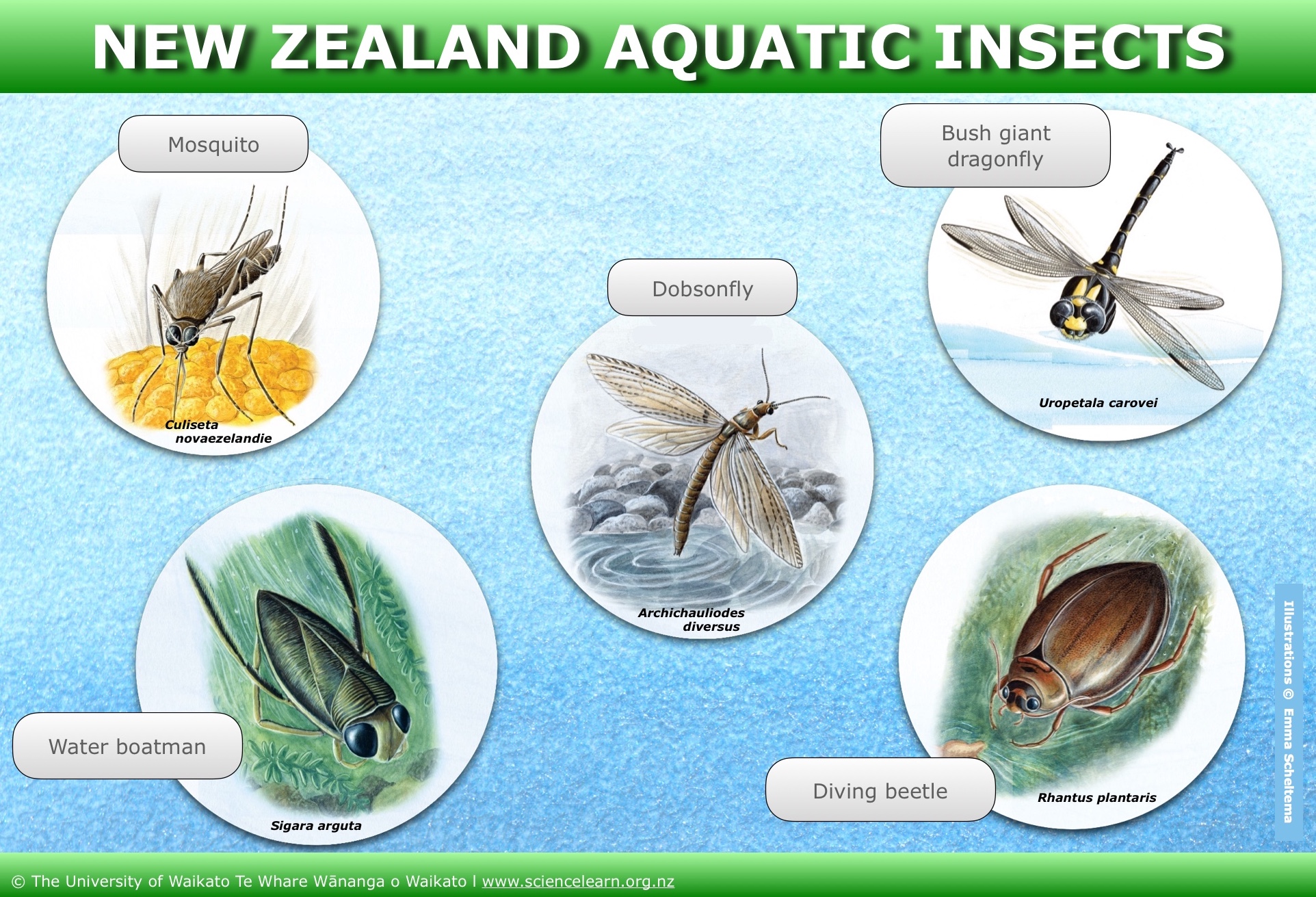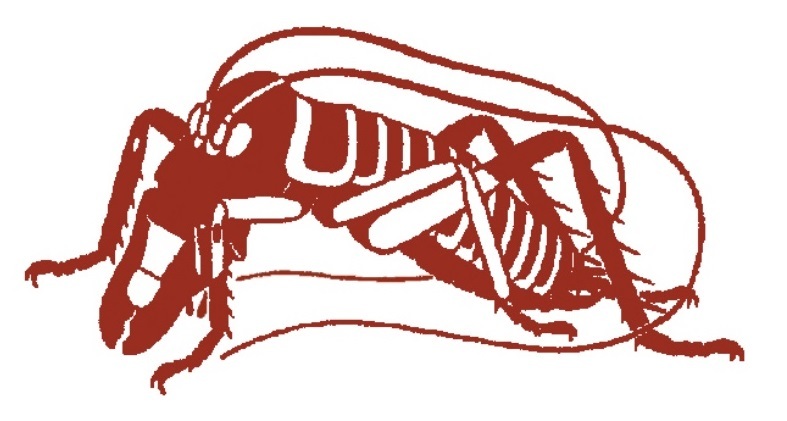We usually think of insects as being animals of the land, but did you know that many insects spend part of their lives in water? Some spend all their early life underwater while others are just great swimmers.
Aquatic larvae
The larvae of some insects live entirely underwater. These larvae often look quite different from their adult forms and have gills to help them ‘breathe’ underwater. Insects with aquatic larvae include mosquitoes, stoneflies and dragonflies. Because their larvae are aquatic, you can often find the adults flying near rivers and ponds as well.
Habitat
You will find different species of insect larvae in different types of rivers or ponds. Some insects are only able to survive in clean flowing waterways, rivers and streams while others can survive in still or polluted water. Scientists can measure the quality of a waterway based on what insects they find living in and near it. This is called the macroinvertebrate community index.
Swimmers
Some insects have entirely terrestrial life cycles but may still enter the water to feed. These insects tend to be found in slow-moving streams, ponds and lakes and even water troughs.
Unlike aquatic larvae, these adult insects do not have gills and so cannot breathe underwater. Insects don’t have lungs like humans do. Instead, they take in oxygen through tiny holes or spiracles along the sides of their bodies when they are at the surface. But this doesn’t stop water boatmen or diving beetles from being great swimmers. When these insects dive underwater, they trap air against their spiracles and use it to breathe, a bit like an oxygen tank. In a way, they’re literally holding their breath!
Human impacts
Like our native fish and other freshwater macroinvertebrates, our aquatic insects have been adversely impacted by human activity. They make good bioindicators of the quality of water in rivers and ponds as many rely on high-quality water to fully develop their larval stages in their life cycles.
These two teacher resources have practical information for restoring streams for native fish: Planning for change and Planting stream edges. These could be adapted when looking at aquatic insects, as a healthy environment for fish also means a healthy environment for these insects.
Related content
Scientists monitored the Waikato River ecology and biodiversity using the Macroinvertebrate Community Index (MCI) over an 8-year period.
Read about how students helped restore mauri to the Oruarangi Stream in this PSP citizen science project.
Explore What’s so special about insects?, Insects – physical characteristics and Insect taxonomy to find out more about insects.
Download these posters from the New Zealand insect cards project:
Activity ideas
The student activity Observing freshwater macroinvertebrates gets students out to their local stream, capturing, observing and developing classification systems based on what they find. This could be combined with an activity to identify what is an insect and what is not.
Citizen scientists – join the New Zealand Mosquito Census and help scientists at Te Papa learn more about the various mosquitos in Aotearoa and their important role in the food chain.
Useful links
Visit our We love bugs! Pinterest board with links to resources and community activities.
NIWA has an online Stream Health Monitoring and Assessment Kit that enables non-scientists to collect consistent, scientifically valid information from small rural streams.
Manaaki Whenua – Landcare Research has an online Freshwater invertebrates guide to assist community groups with monitoring freshwater invertebrates in New Zealand and What is this bug?, a handy guide to common invertebrates of New Zealand. There is also a range of pages providing general information under Invertebrate systematics (includes ants, beetles, weevils, stick insects and scale insects and more).
Find out more about dragonflies in this Our Changing World programme from Radio NZ.
Visit the New Zealand Entomological Society website.
Acknowledgement
Thank you to the New Zealand insect cards project for its support in the writing of this content.
This article has been developed using resources by Dr Leilani Walker and Dr Christina Painting and illustrations by Emma Scheltema. Original material developed with support from the New Zealand Entomological Society. Search the internet to find out where to buy a set of the Insects of New Zealand playing cards.




